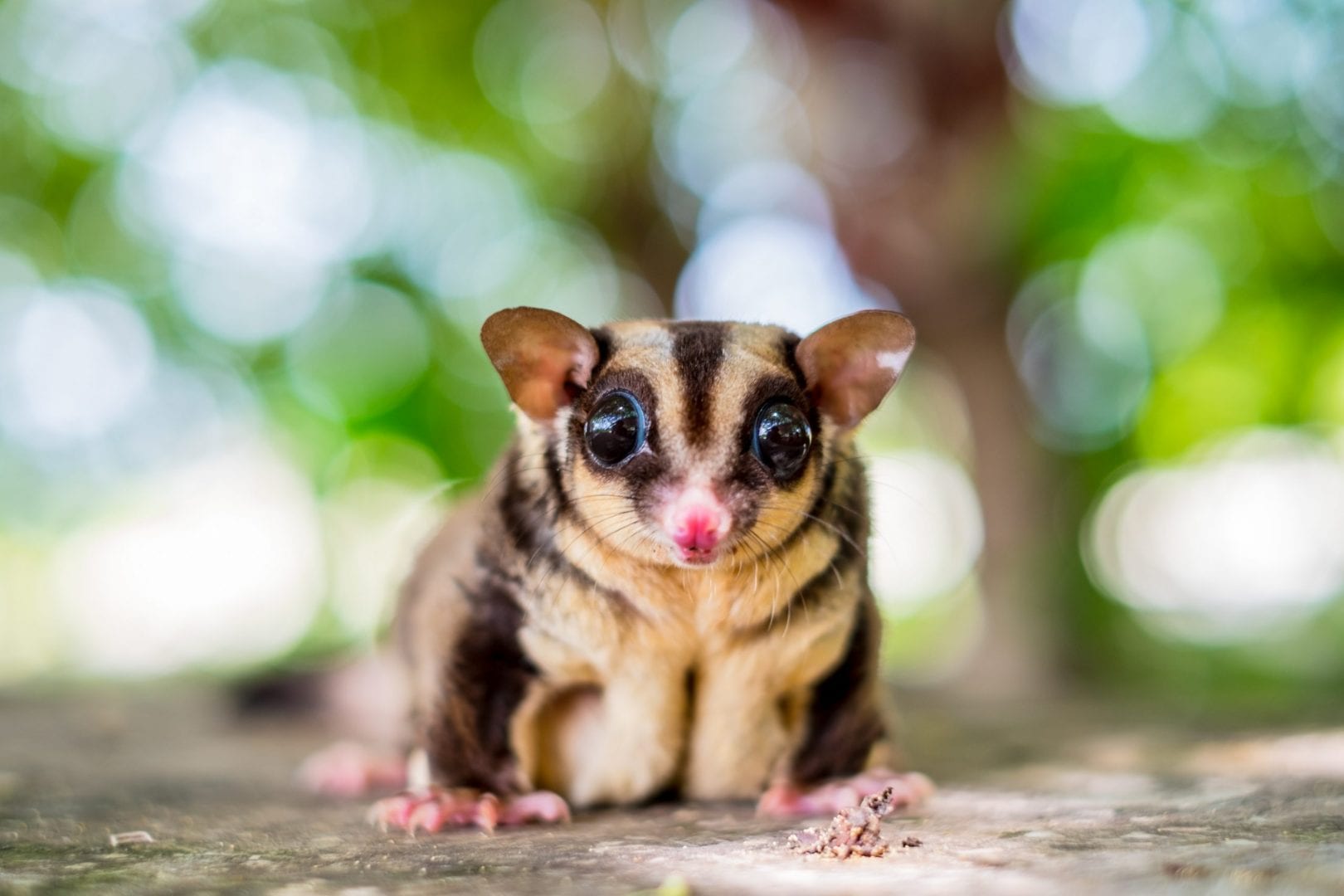

The short answer “WHY” is simply because Sugar Gliders are MARSUPIALS – not “rodents” – which means that even though they may “look” like a mouse to some humans – they do not instinctually SMELL like “food” to most cats or dogs. However, the simple fact is that almost ALL the babies we sell here at Pocket Pets™ go into homes that already have cats and/or dogs in them – and as long as you follow the step-by-step “pet bonding” instructions we provide – we’ve never had a single problem. Once your baby gliders have started to bond with you and your family, one of the most rewarding things about watching them grow up is observing “first-hand” how they form lifelong bonds with the OTHER pets in your home.įor many people, even the IDEA of a dog or cat “bonding” to a Sugar Glider (instead of eating it) seems almost unbelievable.
/sugar_glider-174362136-588df1043df78caebcd78663.jpg)
It’s a small, up-front “investment” that will reward your entire family with countless years of love and companionship.
SUGER GLIDER FREE
(see free special report “Bonding” for more info). In fact, nothing could be further from the truth.Īs previously outlined, for many years now the team of pros here at Pocket Pets™ have successfully placed literally SEVENTY+ THOUSAND of these little darlings into loving homes all around the country – and we provide all our new “moms & dads” with very simple, detailed instructions that make the bonding process both FUN and REWARDING.

While they bond to everyone in the family, each glider will almost always have a favorite person (usually the person who holds them the most) that will be their “primary bond”.Ĭontrary to what some internet “expert” sites and “chatrooms” try to claim, bonding is NOT a time-consuming, exhaustive “ordeal” that requires 12-19 hours a day. When brought into a family setting with children and other pets, they will normally consider everyone (including the pets) to be their “colony”, and will bond to that group for life. In other words, they are not just a “one person” animal. In the wild, Sugar Gliders normally live in “colonies” of 10-15 other Gliders – and when they begin the “bonding phase” of their lives (approximately 9-12 weeks out of the pouch) they “instinctively want” to bond to a whole GROUP. The single most important factor in bonding with a Sugar Glider is their AGE – and that is precisely WHY we only sell babies when they are between eight and twelve weeks old. Bonding is a “process” that can take anywhere from a few days – to two or three months – and just like human children, no two Gliders are exactly the same.įor that reason, we provide all our new “moms & dads” with proven, step-by-step instructions (including lots of special “tips & tricks” we’ve learned over the last 15 years) that DRAMATICALLY speed-up the bonding process – and create a deep, lasting relationship of love and trust between you and your new babies ( see free special report on Sugar Glider Bonding for more info). In this aspect – especially – they have exactly the opposite “mentality” of a rodent in that once they are fully-trained and bonded with you, they normally won’t “hide” or run away because they instinctively want to be with their “family” more than anything else.Īs mentioned earlier, one of the most unique things about Sugar Gliders as household pets is how strongly they “bond” to their human families. Once they are fully bonded to you and your family – they can go almost everywhere with you in public without being caged, (shopping, groceries, movies, etc.), and they will not want to leave your shoulder or pocket. Probably one of the most unique things about Sugar Gliders as household pets is how strongly – and permanently – they bond to their human “families”. Since Sugar Gliders are NOT rodents, they do not instinctively need to chew on things and are not destructive by nature.
/96747320-crop-56a2bcc43df78cf772795fbf.jpg)
This is due to the fact that all rodents have teeth which constantly grow – and therefore must be “worn” down. mice, hamsters, gerbils, etc.) is that they are destructive by nature and constantly have to “chew” on things. One of the biggest problems of owning any “rodent” as a household pet (ie.


 0 kommentar(er)
0 kommentar(er)
